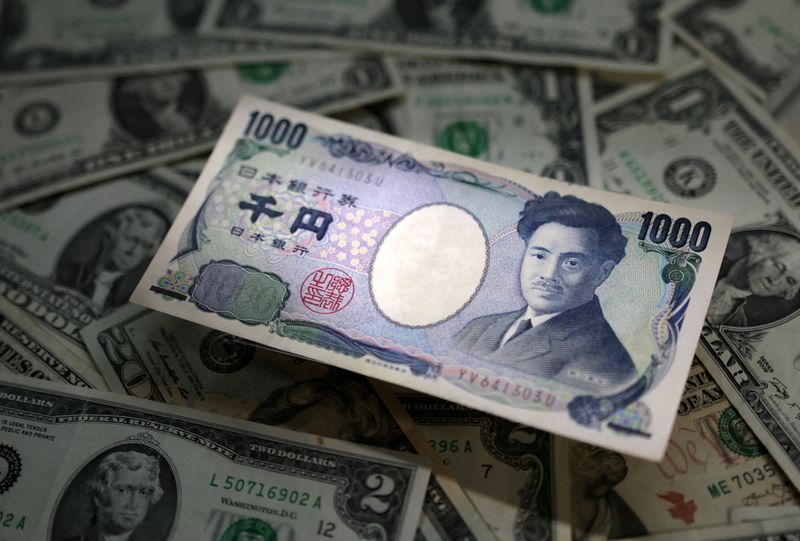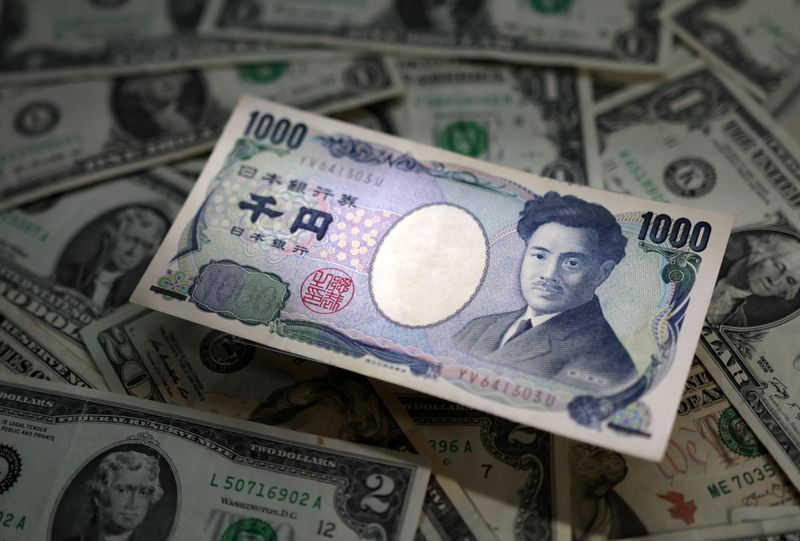
By Laura Matthews
NEW YORK (Reuters) -The dollar hit three-month highs against the yen on Tuesday, but was little changed on the day against most major currencies as traders bided their time ahead of next week’s U.S. election and a slew of incoming economic data.
The loss of a parliamentary majority for Japan’s ruling coalition in weekend elections muddied the political and monetary picture, and has been weighing on the yen.
The dollar was last up 0.12% on the day at 153.47 yen. The BOJ announces its monetary policy decision on Thursday, and is widely expected to leave rates unchanged.
This week’s data slate includes the September U.S. core personal consumption expenditures price index – the Fed’s preferred measure of inflation – on Thursday, as well as a flurry of jobs reports.
Still, the dollar is heading for its largest monthly rise against a basket of major currencies in 2-1/2 years and holding near three-month highs ahead of data that could determine the path for Federal Reserve policy.
U.S. Labor Department’s Job Openings and Labor Turnover Survey, or JOLTS, showed job openings fell to a more than 3-1/2 years low in September and data for the prior month was revised down, a sign of a continually cooling labour market.
Meanwhile, U.S. consumer confidence increased to a nine-month high in October as perceptions of the labour market improved.
“We’re still seeing the same pattern of a slowdown in jobs that has been the overall theme for the last few months, even if September’s (nonfarm payroll) number was well above expectations,” said Helen Given, associate director of trading at Monex USA.
She said, however, she thought any downside for the dollar remained limited, given the inherent risk of the Nov. 5 election and Fed meetings the week after next.
Recent data have highlighted the resilience of the U.S. economy, which, together with mounting market bets of a win by Republican candidate Donald Trump over his Democratic rival Kamala Harris in the election, have underpinned the dollar and pushed up Treasury yields.
The dollar index has risen 3.6% so far in October, marking its best monthly performance since April 2022. It was last seen at 104.34 and is up this year against every major currency except the pound.
“We’re hostage to the elections,” said Marvin Loh, senior global market strategist, at State Street (NYSE:STT) in Boston. “We’re still expecting a fairly tight race just as everybody has been saying for quite some time.”
COUNTDOWN TO BUDGET
Sterling edged up 0.26% to 1.3006 ahead of the Labour government’s first budget.
Finance minister Rachel Reeves, along with Prime Minister Keir Starmer, has reiterated the need for tough fiscal measures to help close a hole in British public finances. They are seeking to retain the confidence of investors, two years after then-Prime Minister Liz Truss’ tax-cutting plans sparked a crisis in the bond market.
Key for sterling will be estimates from the British Office for Budget Responsibility, which makes the forecasts that underpin the government’s spending and tax plans.
The euro was little changed at $1.0815 against the dollar and was down 0.27% against sterling at 83.13 pence.
Meanwhile, the Chinese yuan, which touched its weakest level against the dollar since mid-August, showed little reaction to the possibility Beijing may issue over $1.4 trillion in new debt as part of a series of measures to shore up the economy.
The yuan was last at 7.15 in the offshore market.

Two sources with knowledge of the matter told Reuters China’s top legislative body, the Standing Committee of the National People’s Congress, is looking to approve a new fiscal package. The package, including 6 trillion yuan which would partly be raised via special sovereign bonds, is expected to be approved on the last day of a meeting to be held from Nov. 4-8.
Dan Tobon, head of G10 FX strategy at Citi in New York, said there’s a risk of choppy trading until next week as markets await U.S. election results.
This post is originally published on INVESTING.




